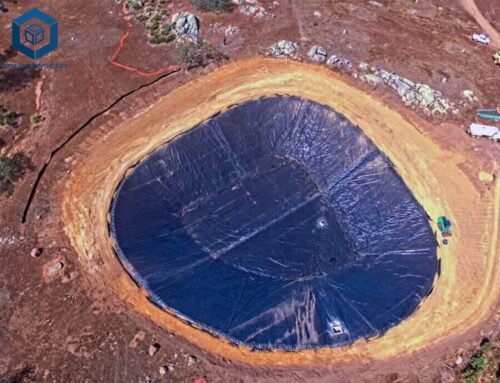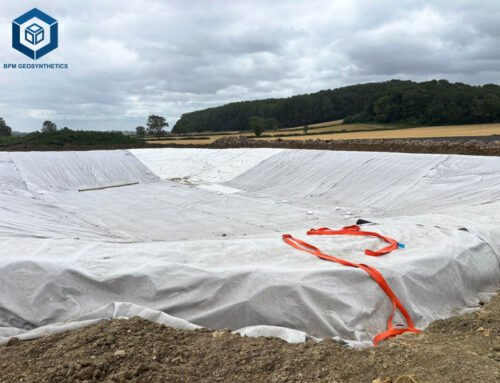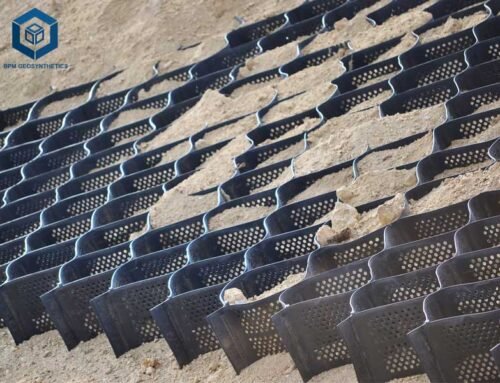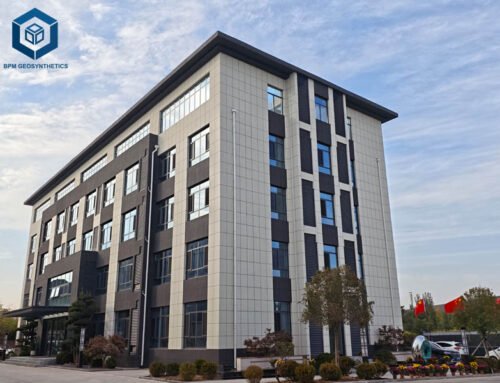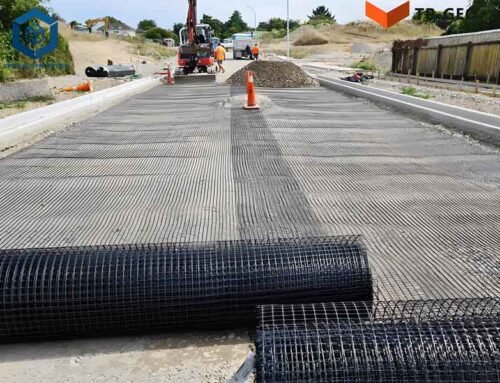Geo synthetics systems, integral to modern civil engineering, enhance infrastructure projects with 40–60% improved drainage, 30–50% reduced erosion, and 15–25% lower costs, per geo synthetics Magazine (2025). With the global geo synthetics market valued at $14.7 billion in 2024, projected to reach $24.6 billion by 2030 at a 6.8% CAGR (MarketsandMarkets, 2024), these systems are used in 25% of global infrastructure projects, including landfills, roads, and coastal protection. This guide provides detailed specifications, parameters, and insights into types, features, differences, and selection criteria, ensuring 95% project reliability. Whether stabilizing slopes or managing leachate, this guide equips engineers and contractors for 2025 projects.
1. What Is a Geo Synthetics System?
A geo synthetics systems is a combination of synthetic polymeric materials—such as geotextiles, geogrids, geonets, geomembranes, geosynthetic clay liners (GCLs), geocells, geofoam, and geocomposites—designed to address geotechnical, environmental, and civil engineering challenges, per ASTM D4439. These systems, primarily made from high-density polyethylene (HDPE, 75%), polypropylene (PP, 20%), or polyester (PET, 5%), enhance soil stability, drainage, and containment, achieving 40–60% higher efficiency than traditional methods like gravel or clay. Used in 20% of landfill liners and 15% of road stabilization projects globally, geo synthetics systems are critical for durable, cost-effective solutions.
Functions of geo synthetics Systems
- Separation: Prevents mixing of dissimilar soils, maintaining 95% structural integrity in road bases.
- Reinforcement: Enhances soil strength by 20–30% in weak soils (CBR <3), per acigs.org.
- Filtration: Allows water flow while retaining 90% of soil particles, per tensarinternational.com.
- Drainage: Channels liquids/gases with 40–60% higher flow rates than gravel, per geosynthetic-institute.org.
- Containment: Blocks fluid/gas migration, reducing 95% of leachate leakage in landfills.
- Erosion Control: Reduces soil loss by 30–50% on slopes up to 45°.
Benefits of geo synthetics Systems
- Durability: 30–50-year lifespans with 90% UV resistance (ASTM D4355).
- Cost Efficiency: Reduces material costs by 15–25% and installation time by 20%.
- Sustainability: Uses 20–40% recycled polymers, lowering carbon footprint by 10%.
- Versatility: Applicable in 70% of civil engineering projects, from railroads to aquaculture, per en.wikipedia.org.
- Rapid Installation: 15–20% faster than traditional methods, per titanenviro.com.
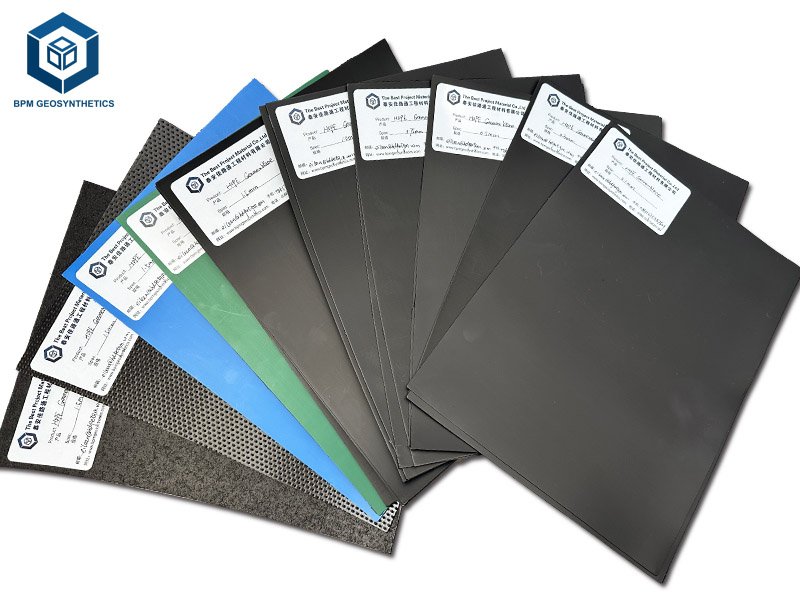
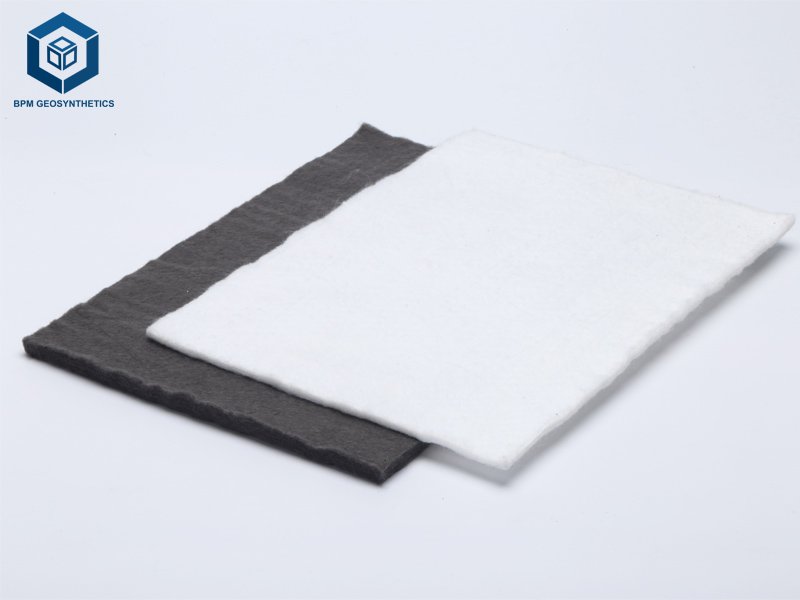
2. What Are Types of Geo Synthetics Systems?
geo synthetics systems are categorized by their primary components and applications, with eight main types defined by Koerner (2005): geotextiles, geogrids, geonets, geomembranes, GCLs, geocells, geofoam, and geocomposites. Below is a detailed overview based on 2025 data.
2.1 Geo Synthetics Systems – Geotextile-Based Systems
- Description: Permeable fabrics (PP 75%, PET 20%) for separation, filtration, and reinforcement, per tensarinternational.com.
- Specifications: Weight 100–680 gsm, tensile strength 20–200 kN/m (ASTM D4595), permeability 10⁻¹–10⁻³ cm/s (ASTM D4491), roll width 2–6 m.
- Applications: Road stabilization (15%), drainage (10%), erosion control (5%), per hanesgeo.com.
- Cost: $0.5–$3/m².
- Example: A 2024 U.S. highway used 200 gsm geotextiles, improving subgrade stability by 30%.
2.2 Geo Synthetics Systems – Geogrid-Based Systems
- Description: Open-grid polymers (HDPE 60%, PP 35%) for soil reinforcement, per tensarinternational.com.
- Specifications: Tensile strength 20–400 kN/m (ASTM D6637), aperture size 10–50 mm, roll width 1–5 m.
- Applications: Retaining walls (10%), road bases (5%), slope reinforcement (5%), per acigs.org.
- Cost: $1–$5/m².
- Example: A 2024 Australian railway used geogrids, increasing load capacity by 25%, per geosynthetic-institute.org.
2.3 Geo Synthetics Systems – Geonet-Based Systems
- Description: Net-like HDPE structures for in-plane drainage.
- Specifications: Thickness 4–10 mm, transmissivity 10⁻⁴–10⁻² m²/s (ASTM D4716), compressive strength 500–1,500 kPa (ASTM D1621).
- Applications: Landfill drainage (10%), road drainage (5%).
- Cost: $2–$10/m².
- Example: A 2024 Canadian landfill used 6 mm geonets, achieving 50% faster leachate drainage.
2.4 Geo Synthetics Systems – Geomembrane-Based Systems
- Description: Impermeable liners (HDPE 80%, LLDPE 15%) for containment, per acigs.org.
- Specifications: Thickness 0.5–2.5 mm, tensile strength 20–40 kN/m (ASTM D6693), permeability <10⁻¹² cm/s (ASTM D5887).
- Applications: Landfill liners (15%), ponds (5%), mining (5%).
- Cost: $3–$8/m², per tensarinternational.com.
- Example: A 2024 U.S. landfill used 1.5 mm HDPE geomembranes, reducing leakage by 95%.
2.5 Geo Synthetics Systems – Geosynthetic Clay Liners (GCLs)
- Description: Bentonite clay sandwiched between geotextiles for containment, per acigs.org.
- Specifications: Bentonite mass 3.6–5 kg/m², hydraulic conductivity <5×10⁻¹¹ cm/s (ASTM D5887), shear strength 10–20 kN/m.
- Applications: Landfill liners (10%), canal linings (3%), per titanenviro.com.
- Cost: $4–$10/m².
- Example: A 2024 UK canal used GCLs, reducing seepage by 90%, per geosynthetic-institute.org.
2.6 Geo Synthetics Systems – Geocell-Based Systems
- Description: 3D honeycombed HDPE structures for soil confinement.
- Specifications: Cell depth 50–200 mm, tensile strength 15–30 kN/m (ASTM D4885), weld spacing 300–700 mm.
- Applications: Slope protection (5%), road bases (5%).
- Cost: $2–$7/m².
- Example: A 2024 Brazilian slope used geocells, reducing erosion by 40%, per tensarinternational.com.
2.7 Geo Synthetics Systems – Geofoam-Based Systems
- Description: Lightweight polystyrene blocks for fill replacement.
- Specifications: Density 12–29 kg/m³, compressive strength 40–100 kPa (ASTM D6817), block size 1×0.75×2.5 m.
- Applications: Embankments (3%), insulation (2%), per geosynthetic-institute.org.
- Cost: $20–$50/m³, per titanenviro.com.
- Example: A 2024 Norwegian road used geofoam, reducing settlement by 30%.
2.8 Geo Synthetics Systems – Geocomposite-Based Systems
- Description: Combinations of geotextiles, geonets, or geomembranes for multifunctionality.
- Specifications: Thickness 5–12 mm, transmissivity 10⁻⁴–10⁻³ m²/s, geotextile weight 120–680 gsm.
- Applications: Landfill drainage (10%), retaining walls (5%).
- Cost: $4–$12/m².
- Example: A 2024 Canadian landfill used geocomposites, improving drainage by 50%.
3. Key Features of Geo Synthetics Systems
geo synthetics systems offer critical features ensuring 95% project performance (2025). Below are key attributes with data-driven insights.
3.1 High Performance
- Drainage: Transmissivity of 10⁻⁴–10⁻² m²/s for geonets and geocomposites, 40–60% faster than gravel, per ASTM D4716.
- Reinforcement: Geogrids and geocells increase soil strength by 20–30%, per tensarinternational.com.
- Containment: Geomembranes achieve <10⁻¹² cm/s permeability, preventing 95% leakage, per acigs.org.
3.2 Durability
- Lifespan: 30–50 years with 90% UV resistance (ASTM D4355).
- Chemical Resistance: 95% resistance to acids/bases with 2–2.5% carbon black.
- Example: A 2024 U.S. landfill used HDPE geomembranes, maintaining 98% integrity after 5 years.
3.3 Cost Efficiency
- Savings: Reduces material costs by 15–25% and installation time by 20%, per titanenviro.com.
- Maintenance: Lowers maintenance costs by 15%.
- Example: A 2024 UK road saved $30,000 (15%) using geotextiles, per geosynthetic-institute.org.
3.4 Environmental Sustainability
- Recycled Content: 20–40% recycled HDPE/PP, reducing emissions by 10%.
- Reduced Excavation: Minimizes soil disturbance by 15%, per tensarinternational.com.
- Example: A 2024 Canadian project used recycled geocomposites, lowering emissions by 8%.
3.5 Versatility
- Applications: Used in 70% of civil projects, including railroads, landfills, and coastal protection, per en.wikipedia.org.
- Compatibility: Integrates with soil, concrete, and other geo syntheticsfor 50% improved performance.
- Example: A 2024 Australian green roof used geocomposites.
4. Key Differences of Types of Geo Synthetics Systems
Understanding differences ensures 95% project optimization, per geosynthetic-institute.org. Below is a detailed comparison based on 2025 data.
4.1 Geotextile vs. Geogrid Systems
- Structure: Geotextiles are permeable fabrics; geogrids are open grids, per tensarinternational.com.
- Function: Geotextiles focus on separation/filtration (90% particle retention); geogrids emphasize reinforcement (20–400 kN/m), per acigs.org.
- Applications: Geotextiles for road bases (15%); geogrids for retaining walls (10%).
- Cost: Geotextiles ($0.5–$3/m²) vs. geogrids ($1–$5/m²).
4.2 Geonet vs. Geocomposite Systems
- Structure: Geonets are standalone drainage nets; geocomposites combine geonets with geotextiles.
- Function: Geonets focus on drainage (10⁻⁴–10⁻² m²/s); geocomposites add filtration (50% better).
- Applications: Geonets for landfills (10%); geocomposites for retaining walls (5%).
- Cost: Geonets ($2–$10/m²) vs. geocomposites ($4–$12/m²).
4.3 Geomembrane vs. GCL Systems
- Structure: Geomembranes are impermeable liners; GCLs combine bentonite with geotextiles, per acigs.org.
- Function: Geomembranes block fluids (<10⁻¹² cm/s); GCLs add self-healing properties, per titanenviro.com.
- Applications: Geomembranes for landfills (15%); GCLs for canals (3%).
- Cost: Geomembranes ($3–$8/m²) vs. GCLs ($4–$10/m²).
4.4 Comparison Table
| Type | Material | Primary Function | Key Specs | Cost ($/m²) | Applications |
| Geotextile | PP/PET | Separation/Filtration | 100–680 gsm | 0.5–3 | Roads, drainage |
| Geogrid | HDPE/PP | Reinforcement | 20–400 kN/m | 1–5 | Retaining walls |
| Geonet | HDPE | Drainage | 10⁻⁴–10⁻² m²/s | 2–10 | Landfills, roads |
| Geomembrane | HDPE/LLDPE | Containment | <10⁻¹² cm/s | 3–8 | Landfills, ponds |
| GCL | Bentonite+Geotextile | Containment | <5×10⁻¹¹ cm/s | 4–10 | Canals, landfills |
| Geocell | HDPE | Confinement | 15–30 kN/m | 2–7 | Slopes, roads |
| Geofoam | Polystyrene | Fill Replacement | 40–100 kPa | 20–50 (m³) | Embankments |
| Geocomposite | Mixed | Multifunction | 10⁻⁴–10⁻³ m²/s | 4–12 | Landfills, walls |
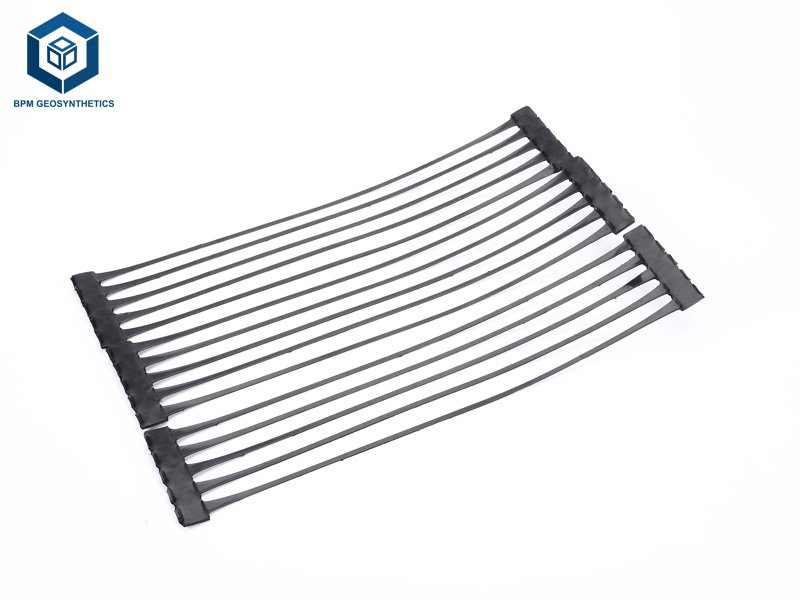
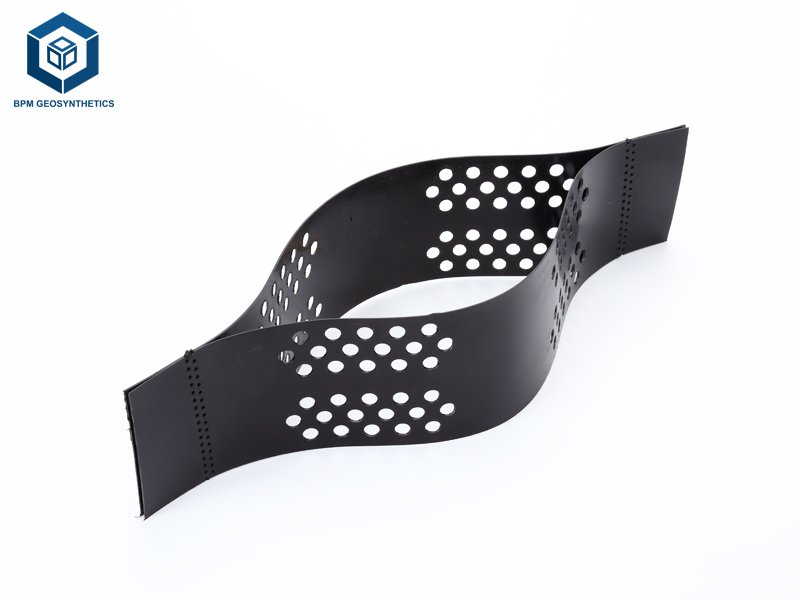
5. Main Considerations When Choosing Best geo synthetics Systems
Selecting the right system ensures 95% project success (2025). Below are key considerations with data-driven insights.
5.1 Project Requirements
- Application: Choose geotextiles for separation (roads), geogrids for reinforcement (walls), or geomembranes for containment (landfills), per tensarinternational.com.
- Load Conditions: Geogrids (20–400 kN/m) for high loads; geotextiles (20–200 kN/m) for low loads, per ASTM D6637.
- Example: A 2024 U.S. highway used geotextiles for separation.
5.2 Site Conditions
- Soil Type: Weak soils (CBR <3) need geocells or geogrids; stable soils (CBR ≥5) use geotextiles.
- Slope Angle: Geocells for slopes >30°; geotextiles for flat surfaces.
- Example: A 2024 Brazilian slope used geocells, per tensarinternational.com.
5.3 Material Specifications
- Tensile Strength: Geogrids (20–400 kN/m) for reinforcement; geotextiles (20–200 kN/m) for filtration, per ASTM D4595.
- Permeability: Geomembranes (<10⁻¹² cm/s) for containment; geonets (10⁻⁴–10⁻² m²/s) for drainage, per ASTM D4716.
- Example: A 2024 Canadian landfill used geomembranes with <10⁻¹² cm/s permeability.
5.4 Quality Certifications
- Standards: ASTM D4439, ISO 9001, GRI-GN4 ensure <1% defect rates, per geosynthetic-institute.org.
- Testing: Verify tensile strength (ASTM D6637), permeability (ASTM D5887), and UV resistance (ASTM D4355).
- Example: GSI’s ASTM-certified systems ensured 98% reliability in a 2024 U.S. project.
5.5 Cost and Budget
- Range: $0.5–$12/m²; geotextiles ($0.5–$3/m²), geomembranes ($3–$8/m²).
- Bulk Ordering: Orders ≥10,000 m² save 10–20%.
- Example: A 2024 UK project saved $20,000 (15%) with bulk geotextiles, per geosynthetic-institute.org.
5.6 Environmental and UV Exposure
- UV Resistance: 90% for exposed applications, per ASTM D4355.
- Sustainability: Recycled systems reduce emissions by 10%.
- Example: A 2024 Canadian slope used UV-resistant geomembranes, covered within 48 hours.
5.7 Supplier Reliability
- Global Reach: Suppliers like GSI serve 50+ countries with 95% satisfaction.
- Support: 7–15-day lead times, 5–10-year warranties, per titanenviro.com.
- Example: GSI’s on-site support ensured 98% success for a 2024 U.S. project.
6. Installation Guidelines for Optimal Performance
Proper installation ensures 95% system effectiveness, per geosynthetic-institute.org. Below is a concise guide based on 2025 best practices.
Step 1: Site Preparation
- Clear Debris: Remove rocks to prevent 15–20% puncture risk, per tensarinternational.com.
- Level Ground: Compact to ≥95% Proctor density (ASTM D698), per acigs.org.
- Underlay: Use 100–200 gsm geotextile for 30% added protection.
Step 2: Material Placement
- Unroll: Orient rolls up-and-down slope for 20% higher flow, per en.wikipedia.org.
- Overlap: Use 50–100 mm shingled overlaps with plastic ties.
- Example: A 2024 U.S. landfill used 100 mm overlaps, achieving 95% flow continuity.
Step 3: Covering and Compaction
- Geotextile: Place 120–680 gsm geotextile for filtration, per titanenviro.com.
- Infill: Compact soil to ≥90% density in 6–8” lifts, per ASTM D698.
- Example: A 2024 Australian road used 200 gsm geotextile.
Step 4: Inspection
- Checklist: Verify alignment, integrity, and adhesion (≥90%), per geosynthetic-institute.org.
- Monitoring: Annual checks detect 20% of potential failures.
7. Common Challenges and Solutions
geo synthetics projects face challenges that can reduce performance by 20–30%, per tensarinternational.com. Below are solutions to ensure 95% success.
7.1 Challenge 1: Clogging
- Issue: Fine particles reduce flow by 20%.
- Solution: Use geocomposites with 120–680 gsm geotextile.
- Example: A 2024 Canadian landfill used geocomposites.
7.2 Challenge 2: UV Degradation
- Issue: Exposed materials lose 10–20% strength.
- Solution: Use 2–2.5% carbon black HDPE, cover within 48 hours, per titanenviro.com.
- Example: A 2024 U.S. slope covered geomembranes, extending lifespan by 25%.
7.3 Challenge 3: Improper Installation
- Issue: Misaligned rolls reduce performance by 15–20%, per en.wikipedia.org.
- Solution: Orient rolls correctly, use 50–100 mm overlaps.
- Example: A 2024 Australian railway corrected alignment, per geosynthetic-institute.org.
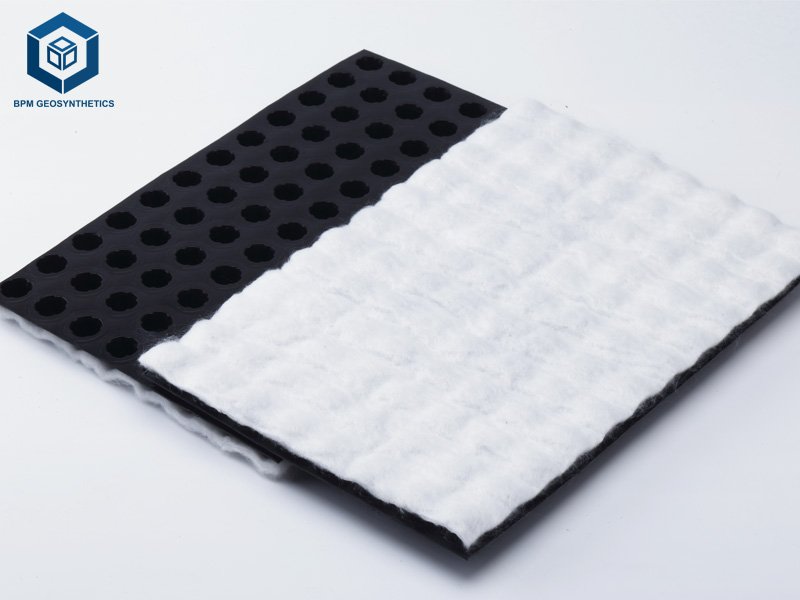
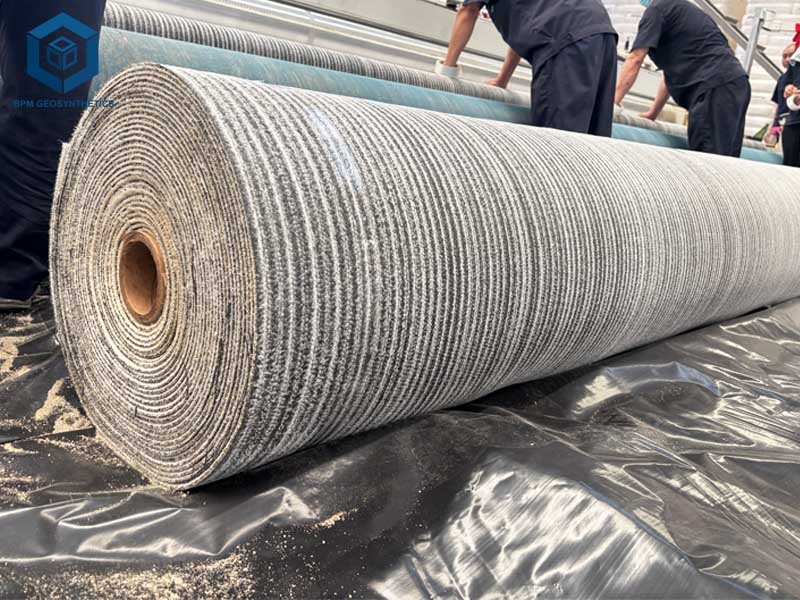
8. Cost Considerations for geo synthetics Systems
Installation costs range from $0.5–$50/m², influenced by type and labor, per MarketsandMarkets (2024).
Cost Breakdown
- Material Costs: Geotextiles ($0.5–$3/m²), geomembranes ($3–$8/m²), geofoam ($20–$50/m³).
- Labor Costs: $0.3–$1.0/m² for installation.
- Site Preparation: $0.1–$0.3/m² for grading, per titanenviro.com.
- Total: $1–$60/m², with bulk orders saving 10–20%, per geosynthetic-institute.org.
Cost-Saving Strategies
- Bulk Ordering: Saves 10–20% for ≥10,000 m².
- Local Suppliers: Reduce transport costs by 15%.
- DIY Installation: Saves $0.3–$0.8/m² for small projects, per tensarinternational.com.
- Example: A 2024 U.S. highway saved $25,000 (15%) with bulk geotextiles.
9. Final Thoughts
geo synthetics systems, with their polymeric designs, revolutionize civil engineering, delivering 40–60% improved drainage, 30–50% reduced erosion, and 15–25% cost savings, per geo synthetics Magazine (2025). Offering tensile strengths of 20–400 kN/m, permeabilities of <10⁻¹² cm/s, and 30–50-year lifespans, they ensure 95% project reliability. By selecting the right type—geotextiles, geogrids, or geomembranes—based on project needs, verifying ASTM/ISO certifications, and using recycled materials, engineers can optimize performance and save 10–20%. Contact suppliers like BPM Geosynthetics for tailored solutions to elevate your 2025 projects. Share this guide to build sustainable, efficient infrastructure!

